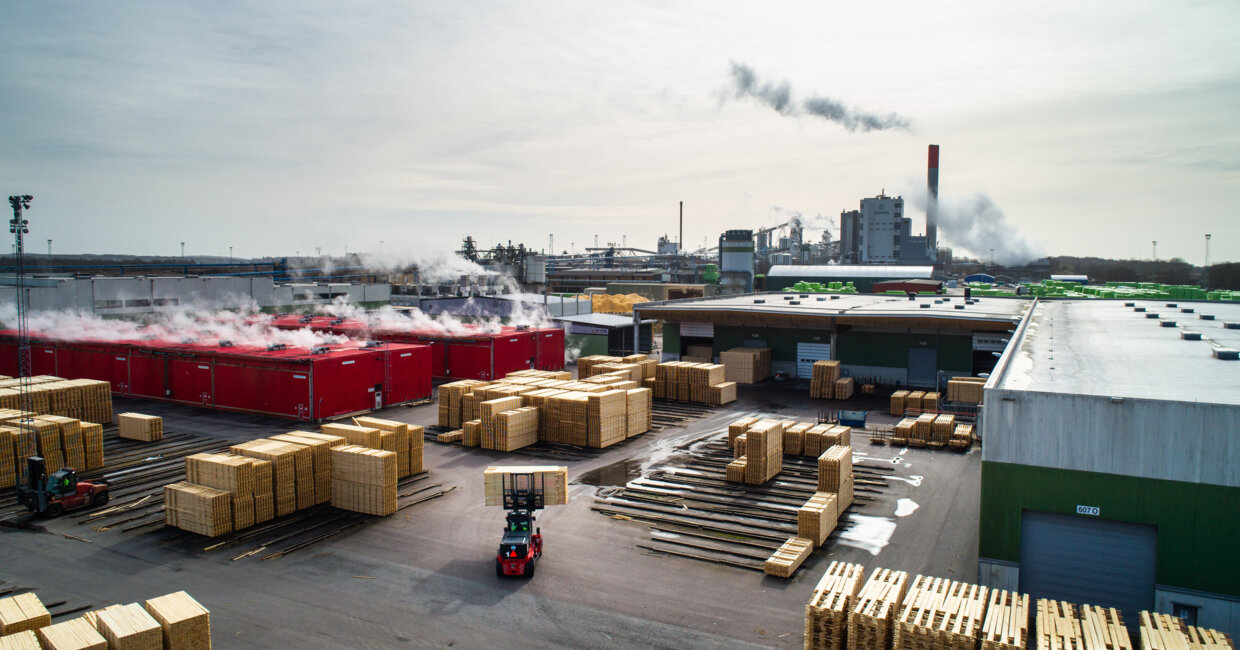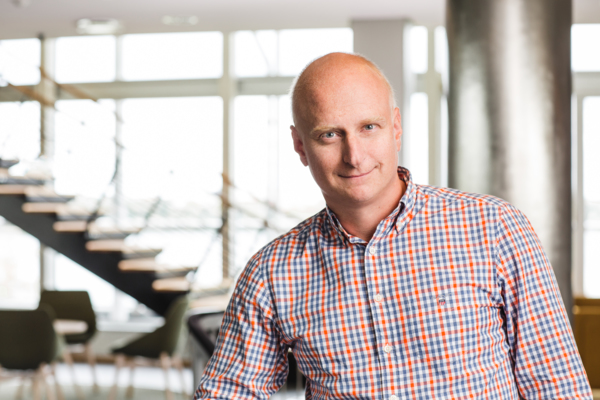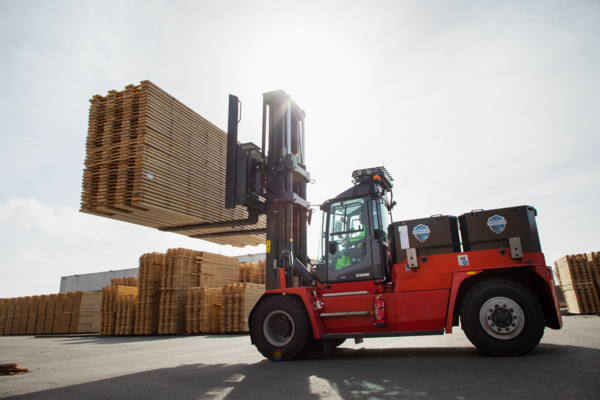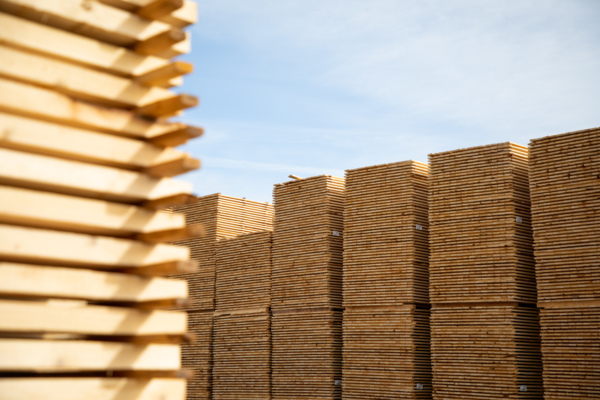
Pulp non-fiction
Södra, the Swedish forest-owners cooperative, has gone from being a buyer of oil to a net producer of electricity. By 2030, their aim is to be fossil-free. Kalmar’s electric forklift trucks are helping them to reach that target.
With a membership of 52,000 forest owners, Södra is Sweden’s largest forest company. In 2018, its net sales were some two billion euro. And with size comes responsibility.

While many environmentalists regularly criticise the forest industry for its operations, the two sides have also worked together to find common ground, and these days, the forest industry is far from being the biggest spoilers in the field.
“I think the industry has gotten better, while environmentalists have a better understanding of what we do to nurture our forests. Sure, there are countries where things aren’t going well, but Sweden and Finland are top of the class when it comes to, for example, reforestation,” says Henrik Brodin, Business Development Director at Södra.
“Our industry has two positive environmental effects: the forests absorb carbon dioxide, and products made of wood can replace products that are less friendly to the environment."
Fossil-free by 2030
The forestry industry has an incentive to care for the environment. It’s the core of their business, which is why Södra, for example, has distributed almost 6,000 bee hotels to its members to ensure the survival of bees and the continued pollination of fruit and berry trees and bushes.
Their future goals are even more ambitious. By 2020, Södra’s production facilities should be fossil-free, and by 2030, Södra’s transports should be fossil-free. And 2020 is just around the corner.
“Our industry has two positive environmental effects: the forests absorb carbon dioxide, and products made of wood can replace products that are less friendly to the environment,” Brodin points out.
The cement industry, for example, is a major producer of carbon dioxide.
However - and there’s always a but – the forest industry has its own challenges with its production and transports.
One solution is biodiesel, HVO100, which releases 90 percent less greenhouse gas emissions compared to regular diesel.
“We began experimenting with biodiesel in 2009, and three years later, we spoke to both Volvo and Scania about our intention to use biodiesel and whether they were prepared to commit to that. We buy about one percent of all diesel in Sweden, so they listened to us,” Brodin says.
HVO100 - Hydrogenated Vegetable Oil – is a synthetic copy of regular diesel, and since it can be used in regular vehicles, the switch doesn’t have to be complicated. It can be fairly simple and straightforward.
“For us, HVO100 still has some problems. We have to buy it, so it is a cost and a dependency. Also, it emits particles negative to the local work environment, which we don’t get with electric vehicles,” Brodin says.
Putting electricity to work
Using electricity addresses both problems since Södra is a net producer of electricity and can use the electricity it produces at its facilities to power, for example, forklifts inside it.
“As long as our facility is up and running, we have electricity. And if it’s not, we have no need for electric forklifts, either,” Brodin says.
 In Sweden, that makes Södra a pioneer in the field, although the trend is similar in the rest of Europe. In Austria, for example, all the major forestry companies have purchased electric forklifts and are planning to make the switch.
In Sweden, that makes Södra a pioneer in the field, although the trend is similar in the rest of Europe. In Austria, for example, all the major forestry companies have purchased electric forklifts and are planning to make the switch.
The transition is easier for companies such as Södra, partly because it’s a cooperative and doesn’t have to deliver quarterly results to its shareholders, and partly because it is Europe’s leading manufacturer of pulp – not paper or cardboard.
“Those processes require much more electricity so their needs are bigger, but on the other hand, we have made it a priority, and we have invested in electricity production,” Brodin says.
“Having said that, using electric trucks is still a long way off,” he adds.
“I think we’ll meet all our targets, one way or another."
Many options for meeting the goal
Brodin remains optimistic about Södra’s chances of meeting their environmental targets.
“Forklifts are under control, as are trucks – we’ll use HVO100 in Sweden – but the big challenge is sea freight, where electricity is not an option in the medium term.
“I think we’ll meet all our targets, one way or another. We’ll use biofuels where they work best and electricity where that is the ideal choice. We’ll also see more electric vehicles, possibly autonomous vehicles, and they will all be more fuel efficient.”
As we move forward, new solutions become clear.
“We’ve gone from being a big buyer of oil to being a seller of electricity. That would have been unthinkable just a few years ago, but now it’s a reality. In the same way, we will come up with new products – and new energy solutions,” Brodin concludes.

Related articles
Further reading
External resources
Subscribe and receive updates in your email
Meld je aan voor onze publicaties










